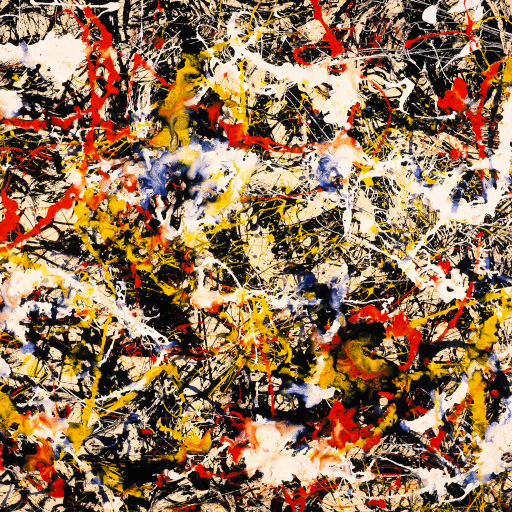Halftone effect – using card dance
If we consider how halftone works then we can think of some solutions. Basically an image is divided up into a fine grid, usually of circles, and the size of each circle is proportional to the brightness of the image under it. In After Effects terms this sounds like how compound effects work – the scale of one layer is being controlled by the brightness of another layer. All we have to do is figure out which compound effect will do what we want.
My first thought was Particle Playground – often overlooked but still very powerful. We could set up Particle Playground to create a grid of circles using text bullet-points and then have a controlling layer – our source image – determine the size of each circle. This is exactly what we want and this approach would work perfectly…
…except that Particle Playground is slow. Really, incredibly, frustratingly slow. So it’s worth looking for a better alternative.
Another plug-in which will do what we want is Card Dance. Card Dance divides our source image into a grid of cards and then sets the size of each card according to luminance of another layer- exactly what we’re looking for. And Card Dance is much, much faster than Particle Playground.
So by separating our source image into primary colours, applying our halftone effect using Card Dance to each individual colour layer, and then combining them with small position offsets we can create a passable halftone effect:

Another advantage of using Card Dance is that it’s aware of the AE comp camera and can be used to create a 3D halftone effect. The layer itself isn’t a true 3D layer but behaves as though it is. This opens up a whole load of possibilities for interesting 3D halftone effects.
While Card Dance provides the finished halftone effect we also have several options for creating our grid of circles. It’s actually interesting to consider how many different ways there are to create a grid of circles in After Effects – including:
• Use the circle effect, then CC Repetile / Motion Tile
• Use a solid and CC Ball Action
• Use a solid and Brush Strokes (size 5,length 1, density & randomness 0)
• Use Particle Playground and a text grid of bullet points
But the one I went for is to use a Shape Layer, and then a repeater. This has the added advantage of allowing me to set up some simple expressions to drive the size, position and alignment of the circles.
There are a few other expressions in this project designed to help the end result look as good as possible. The slider which sets the size of the circles has a simple expression applied to ensure that they’re evenly spaced out horizontally – with no half-circles sticking out the side. Unfortunately I haven’t figured out how to ensure that the same limitation works vertically. If the DotSize you select gives you half a circle at the bottom of the screen then the finished result will look a bit odd, as the Card Dance effect doesn’t do half-cards.
The size of the circles is linked to the Card Dance effect so that the correct number of rows and columns is automatically set, and the colour layers are slightly offset to simulate the printing process. The offset is also linked with an expression to the size of the dot being used. This way you can adjust the size of the overall halftone effect with the one slider.
The paper background was created with fractal noise and you can find an article detailing the process here.
Here are two AE projects – one which creates an ordinary halftone effect on a flat layer and one which demonstrates a 3D camera move. There are options for a black & white image, RGB and CMYK colour space.
You can download the After Effects project here: halftonepatterns-withcardwipe.


